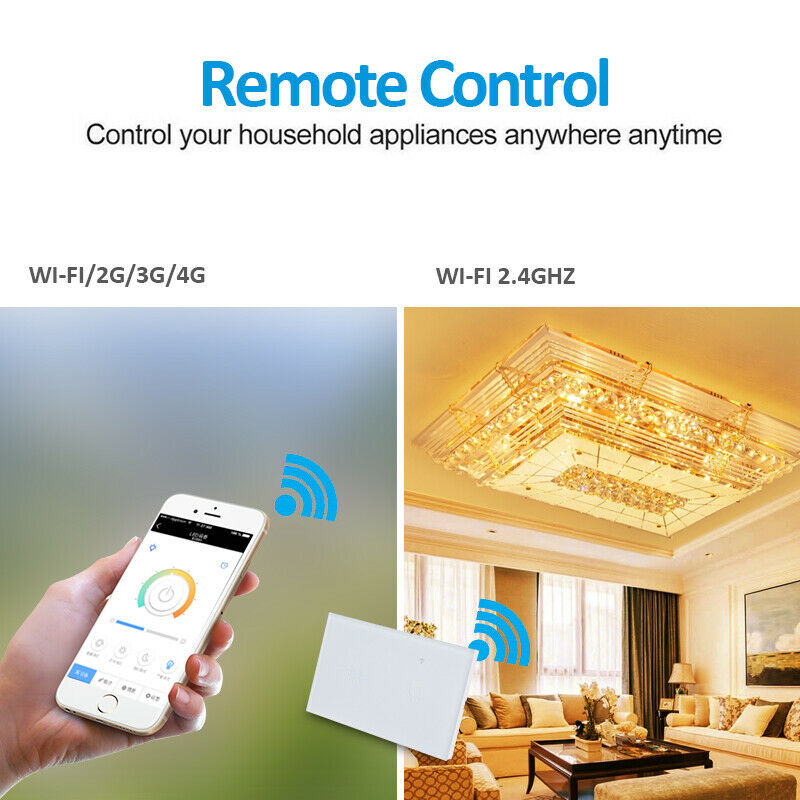A Holiday emergency! I purchased LED flame-bulbs for my outside light-fixtures. But instead of “flickering”… They just pulse on/off. I’m thinking the problem may be caused by the X-10 switches that control the bulbs? Help?
I don’t own an X10 switch but have similar smart touch switches. A quick look at the X10 website shows the following for the WS467 wall switch module:
“The WS467 is one of our more popular switches. It fits in the standard toggle style switch wall plates and is simple to operate and install. Simply press the button to control the light locally or use any X10 controller to control it remotely! It really is that simple.
If you are looking to control non-dimming alternative lighting (like LED, Fluorescent Lighting or Halogen Lighting) the WS13A On/Off Relay Switch may be a better option for you.”
Using a dimmer switch designed for incandescent lights with LED lights gives exactly the same problems you are describing if you try to dim the lights.
It turns out by adding an incandescent bulb adjacent to the flame-bulb did the trick!
i have those same bulbs
just got them
the modes alternate by ‘fast power cycle’ ie faster than about 5 sec
if you leave power off over 5 sec, they stay in the previous mode and do not switch
X-10, i gave up on it years ago, too much trouble
it assumes too many things about a house electrical system, that are not true any more
everything messes it up
ups
dimmers
non resistive light bulb loads
another thing you might try is not using a light controller but a universal controller
[more expensive but will not assume the load is an old timey light bulb]
the bulbs are cool though
dunno what you paid but amazon prime has them for $6 for 2
then i saw even cheaper at wayfair
2.49
wle
Yeah, I loved those X10 thingies, but they couldn’t work with early CFLs. On, fine. Try dimming them and you’d kill the bulb. Off, residual leakage current would give rise to occasional “flickers”, like a poor-man’s lightning mode. Exactly the same like with a dedicated wall-mounted dimmer switch.
Dimmable bulbs have a fixed resistance across them to siphon off any leakage current and prevent flicker. Like you found by just putting a hotwire bulb in parallel.
What drove me away from X10s is the receiver would go mental after a while. Press up and it’d go allllllll the way up to 100. Press down and it’d go alllllllllll the way down to 0. Had to wiggle the telescoping antenna all around, kinda like cranking an untouched volume control all the way cw/ccw a whole bunch of times to get rid of scratchiness. Then it’d pick up the signal again, more or less correctly, ’til another coupla weeks when it’d go mental again.
Great idea, but not a very robust protocol.
Yeah… The X-10 stuff can be flaky. When I built my house 12-years ago, it seemed the best solution at the time. For sure the wireless stuff is at least flaky or worse… I don’t use anything wireless. But honestly, I have not had any problems with the wired components.
What I do seem to remember was… The issues I experienced at first, were solved by connecting both sides of the breaker panel with ???.
there is a thingy you can get that couples the 2 120V phases on your breaker together at RF frequency
basically it is a ceramic capacitor
i have one and it still messed up due to dimmers, UPS, laptop chargers, you name it
and it wasn;t just the RF part, it was the power line part too
wle
I believe it’s called a dummy load resistor.
I used to work in an electrical wholesalers a few years back, dimmers were always causing problems (dunno if this is related to your problems) if I remember correctly there are 2? types of dimmer, leading edge, and trailing edge. Some led lamps used to work fine with a normal dimmer (like regular filament ones), others required a different type, and sometimes these dummy load resistors would sort it out. i cannot remember for the life of me the difference - but I thought I’d try to help… probably haven’t though lol! As CCinPA said, simply adding a regular filament lamp can also work. (heard of that before from electricians)
have a look here it may, or may not help you out with your problems.
The capacitors you mentioned come with the new “smart switches” which can be controlled by your phone or by remote switches not connected to house power. The first one shown below is an earlier version of the smart switch called a” touch switch” and they cost between $13 and $16 for 1-3 gang switches. It just turns on the lights by waving your hand past the glass plate. I have them throughout my house. If you use them with a very low watt LED light you need the capacitor to make the switch recognize that it is connected to the bulb or lamp. I only used one or two of the capacitors as the switches work with nearly any bulb or fixture without using them. They are a direct replacement for a regular wall switch.
If you want one that works with Alexa or the like the price goes up to $20-$25. See the second one below.


Very nice devices… Thanks for the information.